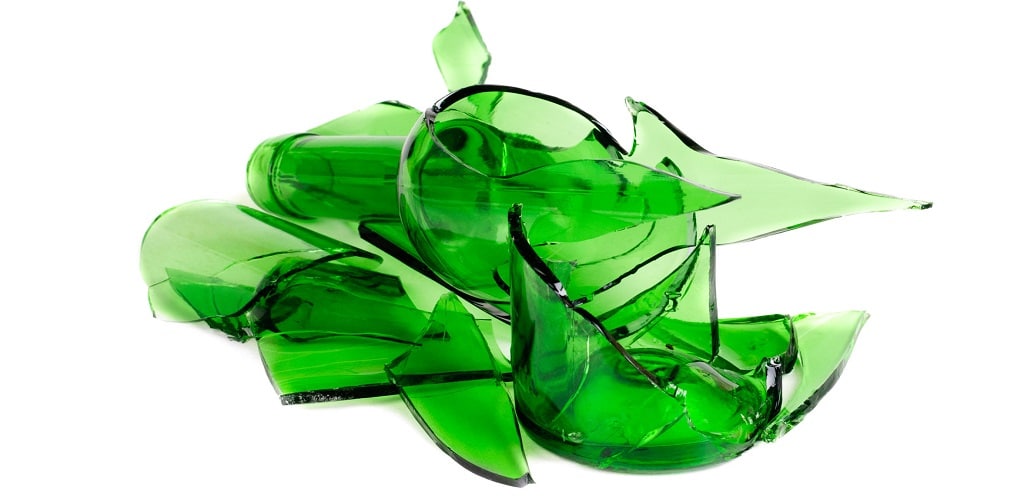Today we’ll discuss another kind of waste. Glass.

This is why Italy is in second place amongst the biggest recycling countries in Europe.
With our 1,800,000 tons of glass recycled per year, only Germany is ahead of us, and we’re setting a notable example for countries like France and England.
Glass recycling is a truly ecological process. It may have the most advantageous of all materials to reuse.
- Lower Costs
- Low Environmental Impact.
The lower costs come from the lower use of energy in the production of glass from recycled instead of new material.
In fact, the melting point is lowered, saving up to 100kg of fuel for every ton of recycled material.
Without counting the reduced use of environmental resources caused by the mining of silica sand and Calcium Carbonate (1,2 tons less of primary materials). Lower transport and waste management costs.
Collected glass is taken to appropriate, specialised centres, where the following steps are taken:
- Manual selection of large foreign objects
- Dividing the material into different groups
- Manual removal of fragments of ceramic, porcelain, stone, metallic objects, plastic, etc.
- Crushing of the biggest pieces, using machines that don’t produce excessive quantities of glass dust
- Removal of metallic objects with magnets of electromagnets
- Removal of light objects such as paper, aluminium, and wood with extractor fans.
- Further automatic sorting of non-ferrous metallic objects such as aluminium, lead, copper, and opaque materials (pottery, porcellain, stones, etc.)
- Final, manual sorting to remove the small bits of pottery, stones, and metal that are still left over after the previous steps
- Cleaning and milling
- Transformation into a primary material to be melted again (scrap).
That’s all good, but how is it collected?
Sorry, I got carried away. I know you’ll already know a lot of this, and I don’t want to bore you further.
Let’s look at what’s really important.
How is glass collected?
“With a truck”, you’ll say. Sure, but you can’t just use any vehicle.
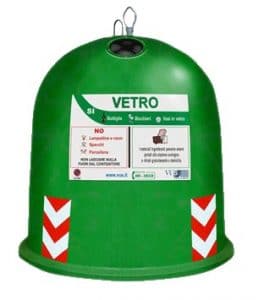
With the arrival of sorting in recycling, the bins changed, and so did the way they were collected.
Now 120 litre bins (the ones with a hole on the top) are used a lot more, or bins for door-to-door collecting.
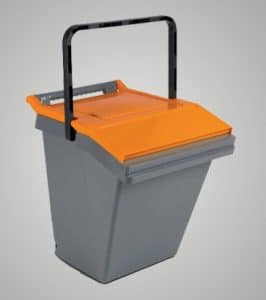
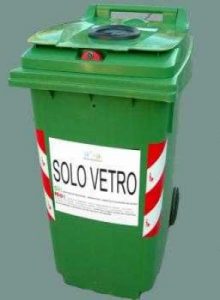
So, a vehicle with a bin lifting device is used.
If there isn’t much material, we can use a dump truck, but in the long run some compaction can be useful.
Simply put, to better remove and spread out the contents on the back of the truck.
However, glass has a terrible defect. It breaks into tiny pieces and gets into the equipment.
Over time these pieces literally eat away at the equipment.
For this exact reason, a compactor with an ejection plate, which are containers that have a plate which pushes the waste to the back, squashing it, isn’t the best solution.
It ISN’T SUITABLE for glass collection.
The plate is actually fitted inside the container with a seal around it, which is literally destroyed by the glass as it goes past.
It also crushes things extremely well, which isn’t useful for glass.
So then what should the right vehicle be like?
It should have three essential requirements:
- A watertight body so that not even the smallest pieces, or liquids inside them, can escape
- Lower compacting power so the refuse isn’t broken too much
- Slide rails for the equipment that are far away from the materials so that they can’t get inside and ruin it.
A minicompactors, just like the one we thought of in 1980, is the ideal solution.
A watertight container, a scoop to remove the refuse, but without the power of large crushers that would only break the glass. Then there are the blade slides that run along the outside of the body.
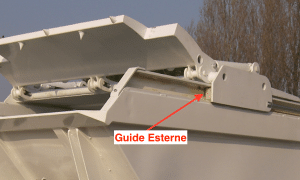
This is VITAL to make sure the equipment lasts and doesn’t get literally eaten by the tiny pieces of glass that can get inside the slides.
Because they’re on the outside, this isn’t a risk.
So we have a DEFINITIVE SOLUTION?
Maybe.
Infact, a current problem with this kind of equipment is the payload.
Like I already told you in other articles (and if it’s the first time you’re reading from me I suggest you go and read ALL the old articles!!), with the coming of the EURO 6 we’ve helped to drastically reduce the capacity of trucks.
The anti-particle filter, urine tanks; we’ve lost so much.
On large trucks (above 3,500kg) this problem hasn’t had too many consequences, but on small trucks (below 3,500kg), there’s little to no extra room.
Once the steel equipment is on board, you can’t put on much else.
This has excluded this kind of truck from heavy refuse collection like food waste, but it is still useful for refuse like plastic and unsorted waste.
And glass?
Well, glass is a heavy material. Shattered. When it’s intact, it has a much greater volume and its weight is relatively low. This means that a minicompactor on a 3,500 litre truck can be a solution when agile trucks are needed, and drivers with a special license aren’t.
CONCLUSIONS
Let’s recap the characteristics of a glass collection truck.
- A watertight body so that not even the smallest pieces, or liquids inside them, can escape
- Lower crushing force so the refuse isn’t broken too much
- Slide rails for the equipment that are far away from the materials so that they can’t get inside and ruin it.
So there you have the few things that you need to keep in mind when you buy a vehicle for this kind of refuse.
However, I suggest you to always trust companies that work in the sector and can give you a long-term experience.
Don’t go only by price, there are too many companies that scam you.
You must have the security of being helped to buy a product that meets YOUR demands. Not something that someone has left over in storage and wants to sell at all costs.
A vehicle made just for YOU!
We’re that kind of company. A truly trustworthy pre and post-sale service. But don’t take our word for it. Take our 40 years of experience.
Take care, and see you next time.
Let’s Rock!
Andrea

